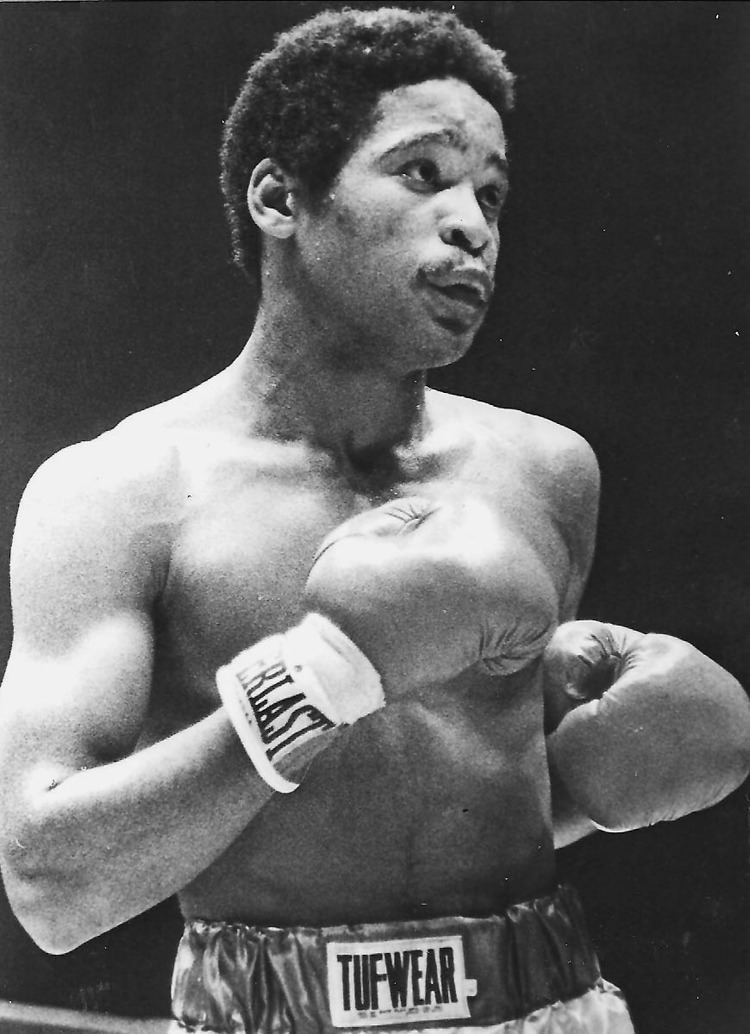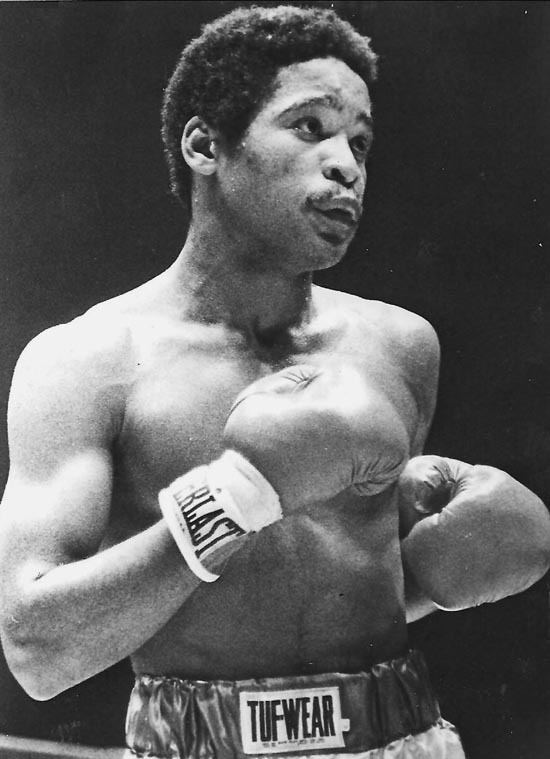Reach 70 in (178 cm) Name Wilfred Benitez Total fights 62 Wins by KO 31 Martial art Boxing | Wins 53 Height 1.78 m Nationality Puerto Rican Role Professional Boxer | |
 | ||
Nickname(s) El RadarBible of Boxing Rated at Light welterweightWelterweight Similar People | ||
Team puerto rico boxing visits wilfred benitez and bestows the rank of honorary team captain
Wilfred Benítez (born September 12, 1958) is a Puerto Rican former professional boxer and the youngest world champion in the sport's history. Earning his first of three career world titles in separate weight divisions at the age of seventeen, he is best remembered as a skilled and aggressive fighter with exceptional defensive abilities.
Contents
- Team puerto rico boxing visits wilfred benitez and bestows the rank of honorary team captain
- Early history
- Professional boxing career
- Career decline
- Retirement and illness
- Support recovery and public appearance
- Awards and recognitions
- Non boxing related awards
- References
Inducted into the International Boxing Hall of Fame in 1996, he is considered among the best Puerto Rican boxers of all time, sharing the honor with Félix Trinidad, Wilfredo Gómez, Carlos Ortiz, Héctor Camacho, and Miguel Cotto.
Early history
Benitez turned pro at 15, a young prodigy who was managed by his father Gregorio Benitez, was a member of one of Puerto Rico's boxing families, his brothers Frankie and Gregory Benitez having also been top contenders in the 1970s. The Benitez troop was largely directed by their mother, Clara Benítez. Young Wilfred was nicknamed "The Radar" for his uncanny ability to foresee and dodge his opponent's blows. He grew up going to a neighborhood boxing gym in New York, where he learned from watching his brothers and other local, renowned fighters practice their skills.

During the early stages of his professional career, Benitez often traveled to the Netherlands Antilles and New York City for fights. He divided his fights between those locations and Puerto Rico. The proximity of those two locations to Puerto Rico helped him start to become a household name in the island while building an international following at the same time. His speed, combined with punching power and surprising ring maturity for a 16-year-old, were enough to make him a world-ranked boxer by both the WBA and WBC, then boxing's only world-title recognizing organizations.
Professional boxing career

On March 6, 1976, at age 17, with his High School classmates in attendance, he faced Lineal and WBA Light Welterweight champion Antonio Cervantes. Known as Kid Pambele, the champion was 30 years old, had a record of 74-9-3 with 35 KO's, and had made 10 title defenses. The result was a fifteen-round split decision in Benitez's favor.

Benitez retained the championship three times, and then moved up to the welterweight division. Benítez challenged Lineal and WBC World Champion Carlos Palomino in San Juan. On January 14, 1979, Benitez won a fifteen-round split decision to become a world champion in a second weight division. After outpointing Harold Weston Jr. in his first defense (avenging an earlier draw), Benitez fought Sugar Ray Leonard in Las Vegas, Nevada on November 30, 1979. It was a scientific fight by both fighters, who demonstrated their defensive skills throughout the bout. Benitez suffered a third-round knockdown and a cut on his forehead, which was opened by an accidental head butt in round six. Leonard put Benitez down again in the fifteenth round and the referee stopped the fight with six seconds left in round fifteen.
After that loss, Benitez again moved up in weight, and on May 23, 1981, at age 22, he became the youngest three-time world champion in boxing history by knocking out WBC World Super Welterweight Champion Maurice Hope in twelve rounds in Las Vegas. The knockout was named one of the knockouts of the year.
His next fight became a historic bout. On November 14, 1981, he fought future world champ Carlos Santos of Ceiba, Puerto Rico. It was the first world championship fight between two Puerto Ricans in boxing history. Ironically, the fight was fought 3,000 miles away from Puerto Rico, at Caesar's Palace in Las Vegas. Benitez won a fifteen-round unanimous decision. His next defense was against Roberto Durán, whom Benitez defeated at Caesar's Palace on January 30, 1982 by a fifteen-round unanimous decision. On December 3, 1982, at the Carnival of Champions in New Orleans, Benitez lost the belt to another boxing legend, Thomas Hearns, by a fifteen-round majority decision.
Career decline
Benitez's career went downwards after the fight with Hearns, as did his lifestyle. In 1983 he lost a unanimous decision to Mustafa Hamsho. In 1984, he tried a comeback under the hand of Yamil Chade, but this proved unsuccessful. On November 28, 1986, with his health declining, he went to Salta, Argentina to fight middleweight Carlos Herrera. Benitez was stopped in seven rounds. But that wasn't the worst part of the trip. His money for the fight was stolen by the fight's promoter, along with his documents and passport, and he was stranded in Argentina for one year. After much government huddling and talks, he was finally able to fly back home to Puerto Rico in 1988.
Two years later, Benitez moved to Tucson, Arizona, where he tried another comeback under the tutelage of Emanuel Steward, the Kronk trainer. This also proved unsuccessful, as he went 2-2 in his last four fights. His last bout took place in Winnipeg, Canada on September 18, 1990, six days after his 32nd birthday. He lost a ten-round decision against Scott Papasadora.
Retirement and illness
After retiring from boxing, Benitez returned to Puerto Rico, where he lived with his mother Clara on a $200 a month pension provided by the World Boxing Council. Benitez now suffers from an incurable, degenerative brain condition caused by the blows he took in the ring.
In 1997, Wilfredo was moved permanently to a public run nursing home for medical reasons by his mother Clara, a licensed nurse.
In 2002, Sugar Ray Leonard visited Benítez, who by this time had forgotten his identity. During the visit, their fight was shown on television. Consequently, Benítez remembered the event and said to Leonard, "Ray, I did not train for that fight." In 2004, Benitez was diagnosed with diabetes. His mother died in the summer of 2008.
Support, recovery, and public appearance
Ring 10, a non-profit organization that helps impoverished former fighters, provides a monthly stipend to Benitez and established "The Wilfred Benitez Fund" to raise more money to aid the fallen champion.
During 2012, Benitez was honored with a statue in Puerto Rico.
On November 27, 2012, a smiling and healthy looking Benítez attended the funeral of Hector Camacho in Puerto Rico, arriving in a wheelchair. Benítez arrived accompanied by boxers Felix Trinidad, Wilfredo Gomez, and Alfredo Escalera. Surprising the mourners, Benitez rose to his feet for a boxing pose in front of Camacho's coffin.
Awards and recognitions
Benítez was inducted to the International Boxing Hall of Fame in 1994.
= Indicates the person is no longer alive
Non boxing related awards
Key to the City
